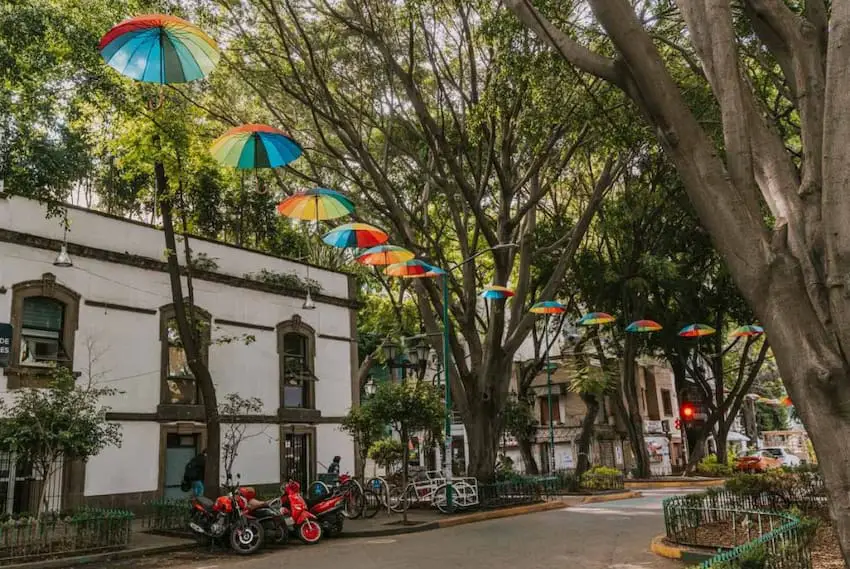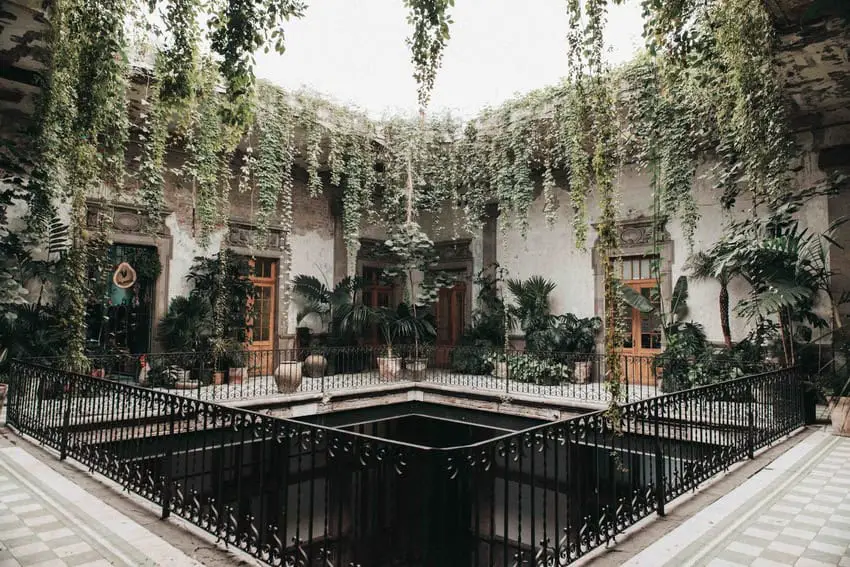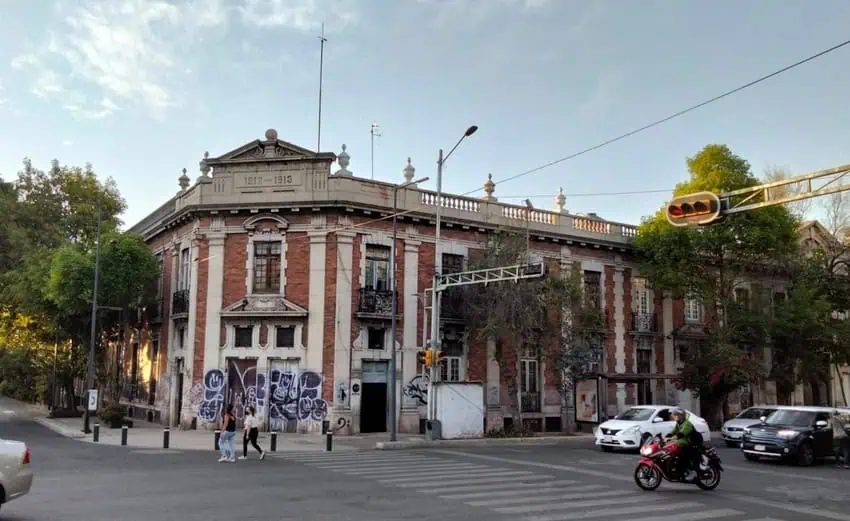Borough: Cuauhtémoc
Established: 1906
Location: 850 m east of the Angel de la Independencia
Pre-Columbian inhabitants: Mexica
Who lives here
La Juárez has come a long way since its inception in the early 1900s, when only the wealthy graced its streets. Today, you can find a mix of young professionals, artists and families largely between the ages of 25 and 45.

The unique blend of urban living, historical charm and modern amenities draws locals and, as of late, expats. La Juárez’s proximity to La Roma and the Historic Center is an added bonus, as is its generally laid-back atmosphere.
A brief history of La Juárez
At the turn of the 19th century, Mexico City’s Historic Center was losing its residential luster. As the Zócalo and surrounding streets became busier, louder and more crowded, wealthy families looked around for calmer alternatives. Colonia Juárez, officially inaugurated as such in honor of the 19th-century Mexican president in 1906, was an attractive option. It was verdant, quiet and ripe for construction.
Almost overnight, one could find new Art Nouveau mansions popping up on streets named after European cities. Embassies and businesses moved in and La Juárez quickly became one of the capital’s most affluent areas — but not for long. In 1910, the Mexican Revolution swept the city and the Porfirian elite abandoned their new community in search of safer pastures.
For years, La Juárez fell into dereliction. It wasn’t until the 1940s that it resurged. Shops, cafes, restaurants and bookstores replaced the ground floors of once-residential buildings. Antiques stores and jewelers occupied the section above Avenida Insurgentes, now known as Zona Rosa. It was a place to see and be seen, with visitors coming from nearby cities to buy collectibles or peruse local art. The arrival of Korean immigrants in the 1970s and ‘80s added another layer to an increasingly eclectic society.

The vibrant commercial district was severely damaged in the 1985 earthquake. Its soul, however, remained, and by the early 1990s La Juárez was thriving again — this time with a new look.
A guide to La Juárez today
On a map, La Juárez is shaped like a triangle, enclosed by Paseo de la Reforma, Avenida Chapultepec and Avenida Bucareli. It’s divided by Avenida Insurgentes into what might feel like two sharply contrasting personalities: to the west is Zona Rosa, a predominantly-nocturnal haven for the LGBTQ+ community. Sandwiched between its Korean restaurants are thumping rooftop bars and dance clubs. East of Insurgentes is a boutique shopper’s paradise complemented by a sizable list of trendy restaurants, art galleries and architecture reminiscent of the Parisian suburbs.
If what you’re looking for is entertainment, you’re sure to find it here. From small theaters to jazz clubs to vintage bookstores, there’s plenty to keep your attention at full occupancy. For the stylish crowd, the oh-so-chic Soho House hides in plain sight on Calle Versalles and Hanky Panky Cocktail Bar hides out of sight on Calle Turin. Surprisingly, the neighborhood remains largely local, though you’re sure to run into a fair share of expats on Calle Havre and Calle Dinamarca.
La Juárez is great if you love: Europe. Beyond the architecture and street names like Londres and Hamburgo, there is an undeniable Italy-meets-Istanbul-meets-Mexico feel going on here, and it’s rather charming.

What to do in La Juárez
Postales de Cafe: The Condesa favorite recently opened its third and — in my opinion — dreamiest outpost on the bright corner of Calle Napolés and Calle Marsella. Come for strong coffee and excellent people-watching.
Librería Jorge Cuesta: Warning! This captivating vintage bookstore will give you surreal flashbacks of your hoarding grandmother’s living room – assuming it was stuffed to the gills with antiques, trinkets and the occasional cat.
Utilitario Mexicano: A go-to for gifts, this little Mexican-made shop has every cool kitchen utensil you might want, as well as a selection of paper products and bathing essentials.
Querencia: This well-priced, quality plant shop that also sells things you never knew you needed, like handmade soy candles and faux-gold jewelry.
Fusion Design Market: Where local artisans and designers showcase handmade goods, including clothing, accessories and home decor, all with sustainability in mind.
Hotel Geneve: If you don’t stay here, you should at least pop into the lobby of this historic hotel, a favorite among travelers since its opening in 1907.
Teatro Varsovia: Catch local talent in this intimate theater, which hosts various performances including plays, concerts and cultural events.
Parker and Lenox: Stylish and sexy, this NYC-esque jazz club is a great spot for a date with your cute Spanish teacher or as a group outing with your music-loving friends.
Xaman Bar: Almost undiscoverable as a speakeasy should be, you’ll be greatly rewarded by the basement bar’s marvelous cocktail menu and seductive vibe.
Casa Manuel México: Tour the elegant abode of great Mexican designer Manuel Méndez, which quadruples as a tea house, hotel and fabulous event space.
Museo de Cera: To be clear, this is a wax museum. If that’s not your thing, who am I to judge? It’s not mine either. A walk by the magnificent mansion it’s housed in, though, is worth your while.
Fábrica Social: You might experience sticker shock upon first glance. But these incredible, colorful textiles are sustainable, durable and handmade by artisans all over Mexico.

Where to eat in La Juárez
Pazzesca Pizzeria: This place is a jewel for anyone who appreciates authentic Italian food. I’m talking pasta al dente, pizza made in the estilo di Napoli, focaccia baked in front of your eyes and the opportunity to eavesdrop on your neighbor’s conversation… in Italian.
Taller Xilotl: My fingers tremble as I type this. Do I want to share my very favorite restaurant in all the land with hundreds of thousands of readers? When it only has about six tables and a tiny, open-air kitchen? Yes, I do, because I believe it’s that good. Find me a better fish taco in Mexico City. I dare you.
La Barrita Comida del Mar: If you’re craving fresh, coastal dishes in a casual environment, this is your spot. The clientele spills onto the sidewalk in the most inviting of ways, making you feel like you’re at a laid-back house party, without the chit-chat.
Sushi Kyo: It’s one of the most highly-rated sushi spots in a city that boasts a plethora of highly-rated sushi spots. Edo Kobayashi rarely disappoints, and this 13-seater escape to Japan is no different.
Café Nin: Don’t go on a weekend, as there will be a wait. Elena Reygadas, the brainchild and chef behind Roma favorite Rosetta, knows ambience and she knows it well. Add to that some of the best pan dulce in CDMX and you’ve got yourself a lovely breakfast nook.
Havre 77: Escargot, anyone? When you’re feeling French, chef Eduardo García’s latest masterpiece has you covered. Both the food and the space are works of art and will effectively whisk you away to La Marais, one bite at a time.
Taverna: The Mediterranean-inspired menu and extensive wine list is best enjoyed within its dynamic, artsy atmosphere. The bar scene is exceptionally vibey, but go early, as it fills up quickly.
Bagels Lepu: They claim to be the closest thing to New York bagels in Mexico, which might be why the place is always packed. Their menu is straightforward: classic bagels and toppings like lox, whitefish, cream cheese and eggs. There’s also a bakery but… bagels.
One hidden gem
I stumbled on Tannin Artbar by sheer chance and was wowed by the concept. An art gallery, wine bar, tasting house and garden oasis, all in one? Sold. To boot, there’s a generous selection of Mediterranean dishes, perfect for indulging in under the not-so-starry Mexico City sky.
Bethany Platanella is a travel planner and lifestyle writer based in Mexico City. She lives for the dopamine hit that comes directly after booking a plane ticket, exploring local markets, practicing yoga and munching on fresh tortillas. Sign up to receive her Sunday Love Letters to your inbox, peruse her blog, or follow her on Instagram.
